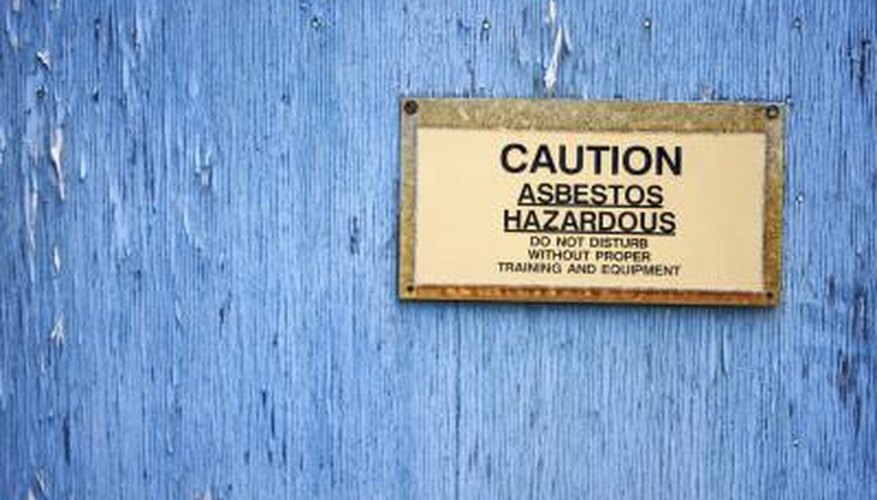Asbestos was used in the manufacturing of tiles and tile adhesives from the 1900 to approximately 1980. While not all tiles produced during this time period contain asbestos, enough do to make the renovation of some older homes hazardous to the homeowners.
True asbestos testing should be carried out in a laboratory, but there are ways to identify the probability of asbestos in a floor. Before you remove old vinyl flooring, determine the likelihood of it containing asbestos and call in the EPA for guidance if necessary.
Age of the tile
Tiles containing asbestos and asbestos adhesives were used most frequently between the 1920s and the 1960s. While the tiles were produced in some areas until the 1980s, by the 70s most manufacturers had stopped the production and sale of this material.
- Tiles containing asbestos and asbestos adhesives were used most frequently between the 1920s and the 1960s.
If the tiles were installed at the time the house was built, or if any indications point toward the age of the tiles, try to find out if the tile was laid prior to the 70s. If it was, there is a high probability it contains asbestos.
Colour of the tile
If the tiles in question have been identified as coming from a specific time period, take a look at their colour. Most asbestos tiles produced from the 20s to the 60s are dark in colour. Black asphalt tiles were extremely popular during this time period, but shades of burgundy, dark green, dark teal and brown will also frequently contain asbestos fibres or dust.
Size of the tile
The most popular size of tile during the time period asbestos floors were produced was nine inches. Nominally sized 30 cm (12 inch) tiles are seen less frequently but were also produced during this time period. Nearly all nine-inch vinyl tiles produced prior to the 1970s contain asbestos fibres or adhesive. Tiles of approximately 30 cm (12 inches) in size, and more likely 33 cm (13 inches), may also contain asbestos.
- The most popular size of tile during the time period asbestos floors were produced was nine inches.
- Nominally sized 30 cm (12 inch) tiles are seen less frequently but were also produced during this time period.
Material
If the flooring in question was manufactured between the 1960' and 1980s and is not a nine-inch or 30 cm (12 inch) vinyl tile, but is instead a sheet of linoleum, it may contain asbestos in its backing. By this time period, many manufacturers were no longer producing asbestos tiles, but the adhesive used to install tiles and linoleum flooring still contained asbestos dust and fibres.
Rubber tiles produced during this time period may also have been affixed to the floor using asbestos adhesives.
Location of the Tile
Asbestos was popular in the home as a protection against heat and fire. Since asbestos is fireproof, it may have been installed in areas of high heat. This can include around fireplaces and furnaces in the basement, as well as beneath wood stoves.
Asbestos was used very frequently in basements, garages and other areas where it was laid directly on top of cement. The adhesive used to put down asbestos vinyl tiles adhered particularly well to these areas and was impervious to the moisture that may affect slab installations.
- Asbestos was popular in the home as a protection against heat and fire.
- Asbestos was used very frequently in basements, garages and other areas where it was laid directly on top of cement.
